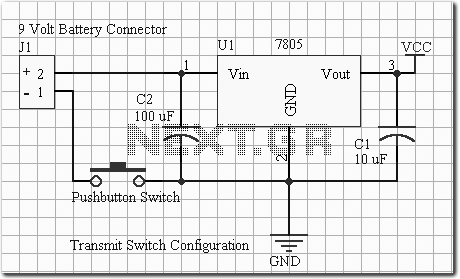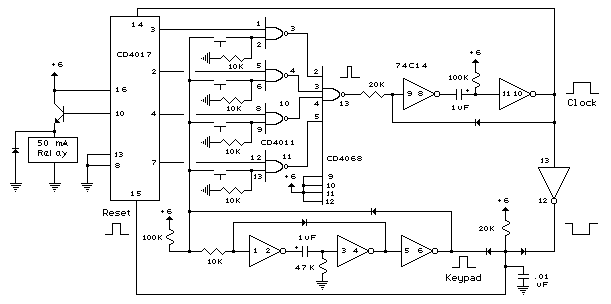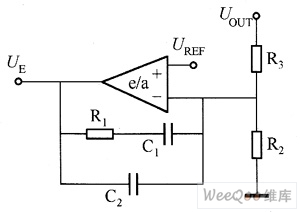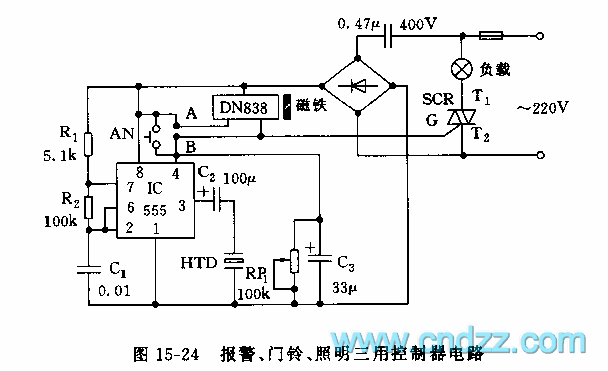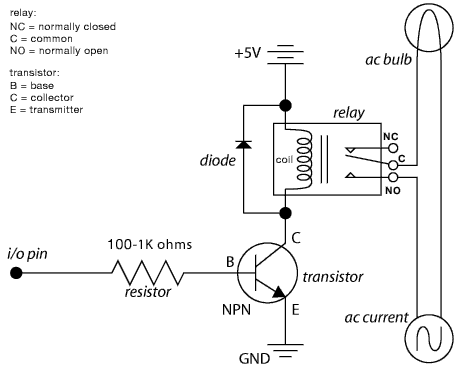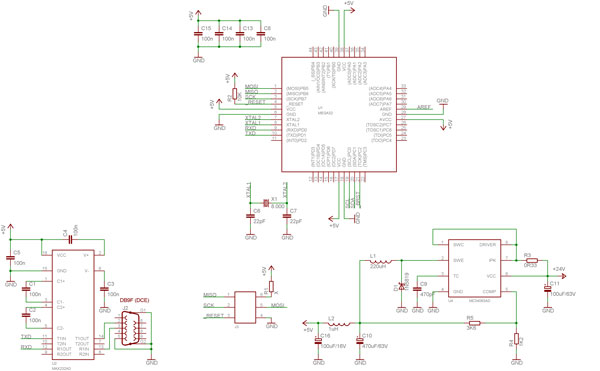
Digital Volume Control
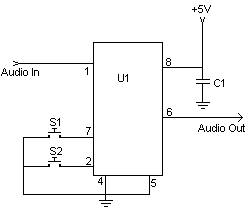
This digital volume control has no pot to wear out and introduces almost no noise in the circuit. Instead, the volume is controlled by pressing UP and DOWN buttons. This simple circuit would be a great touch to any home audio project. More: C1=0.1uf Ceramic Disc Capacitor U1=DS1669 Digital Pot IC (See Notes) S1, S2=Momentary Push Button Switch MISC=Board, Wire, Socket For U1
The described digital volume control circuit utilizes a DS1669 digital potentiometer integrated circuit (IC) to manage audio levels without the mechanical wear associated with traditional potentiometers. This design is advantageous for audio applications as it minimizes noise, enhancing sound quality. The circuit is controlled via two momentary push-button switches, designated S1 and S2, which allow for intuitive volume adjustments—S1 increases the volume while S2 decreases it.
Key components include a 0.1 µF ceramic disc capacitor (C1), which serves to filter out high-frequency noise and stabilize the voltage supply to the digital potentiometer. The DS1669, as the core of the circuit, is designed to handle digital volume control applications efficiently. It is recommended to refer to the manufacturer's datasheet for specific pin configurations and electrical characteristics to ensure proper integration into the circuit.
The circuit is designed to operate with a dual polarity power supply, typically providing ±5V. This voltage range is crucial as it helps to mitigate clipping issues that may arise when the input signal approaches the limits of the IC's operational range. Importantly, the input signal should not fall below -0.2 volts to maintain proper functionality and avoid distortion.
For assembly, a suitable PCB (printed circuit board) is required, along with necessary wiring and a socket for the DS1669 IC. This setup not only ensures reliable connections but also facilitates easy replacement of the IC if necessary. Overall, this digital volume control circuit presents a modern solution to volume management in home audio projects, combining simplicity with effective performance.This digital volume control has no pot to wear out and introduces almost no noise in the circuit. Instead, the volume is controlled by pressing UP and DOWN buttons. This simple circuit would be a great touch to any home audio project. C1=0.1uf Ceramic Disc Capacitor U1=DS1669 Digital Pot IC (See Notes) S1, S2=Momentary Push Button Switch MISC=Board, Wire, Socket For U1 Notes: 1. U1 is available from Dallas Semiconductor. 2. S1 turns the volume up, S2 turns it down. 3. The input signal should not fall below -0.2 volts. 4. Using a dual polariity power supply (+-5V works fine) will cure most clipping problems. You will have to check the data sheet for the correct pins to connect your voltages. 🔗 External reference
The described digital volume control circuit utilizes a DS1669 digital potentiometer integrated circuit (IC) to manage audio levels without the mechanical wear associated with traditional potentiometers. This design is advantageous for audio applications as it minimizes noise, enhancing sound quality. The circuit is controlled via two momentary push-button switches, designated S1 and S2, which allow for intuitive volume adjustments—S1 increases the volume while S2 decreases it.
Key components include a 0.1 µF ceramic disc capacitor (C1), which serves to filter out high-frequency noise and stabilize the voltage supply to the digital potentiometer. The DS1669, as the core of the circuit, is designed to handle digital volume control applications efficiently. It is recommended to refer to the manufacturer's datasheet for specific pin configurations and electrical characteristics to ensure proper integration into the circuit.
The circuit is designed to operate with a dual polarity power supply, typically providing ±5V. This voltage range is crucial as it helps to mitigate clipping issues that may arise when the input signal approaches the limits of the IC's operational range. Importantly, the input signal should not fall below -0.2 volts to maintain proper functionality and avoid distortion.
For assembly, a suitable PCB (printed circuit board) is required, along with necessary wiring and a socket for the DS1669 IC. This setup not only ensures reliable connections but also facilitates easy replacement of the IC if necessary. Overall, this digital volume control circuit presents a modern solution to volume management in home audio projects, combining simplicity with effective performance.This digital volume control has no pot to wear out and introduces almost no noise in the circuit. Instead, the volume is controlled by pressing UP and DOWN buttons. This simple circuit would be a great touch to any home audio project. C1=0.1uf Ceramic Disc Capacitor U1=DS1669 Digital Pot IC (See Notes) S1, S2=Momentary Push Button Switch MISC=Board, Wire, Socket For U1 Notes: 1. U1 is available from Dallas Semiconductor. 2. S1 turns the volume up, S2 turns it down. 3. The input signal should not fall below -0.2 volts. 4. Using a dual polariity power supply (+-5V works fine) will cure most clipping problems. You will have to check the data sheet for the correct pins to connect your voltages. 🔗 External reference
